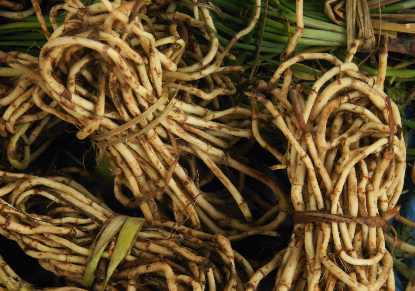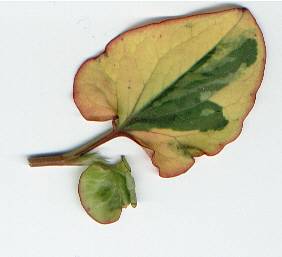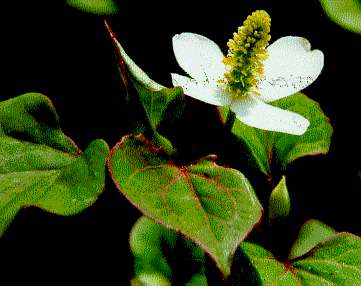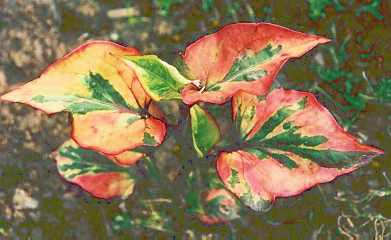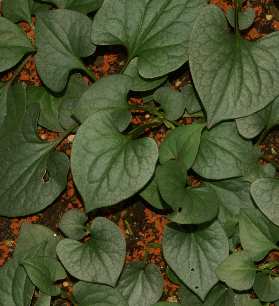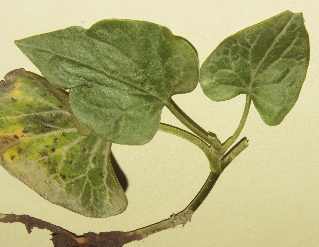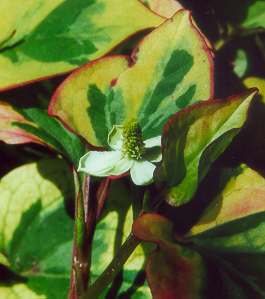
|
| The beautiful variegated cultivar of Chameleon plant |
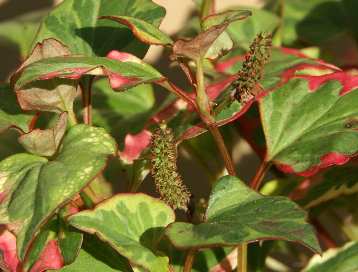
|
| Fruiting chameleon plant |
The North-Eastern Indian union state Manipur boasts of a highly original cuisine, which uses not only leaves but also the fresh rhizome of chameleon plant; it employs a host of further herbs (among others, a Mediterranan-like type of basil, cress, dill, coriander, long coriander, Vietnamese coriander). The preference for aromatic leaves and an excessive use of fermented fish flavours puts Manipuri food far apart from Indian mainstream cooking, making it more comparable to the cooking styles of neighbouring South East Asia.
In Manipuri cuisine, chameleon leaves are often employed in salads like
singju [সিংজু, ꯁꯤꯡꯖꯨ],
a mixture of raw leaves, lotus root slices and aromatic herbs; it is flavoured with nutty-tasting powder of sesame seeds, toasted legumes and
pungent fermented fish; if available, slices of superhot local chiles
(umorok [উমোরোক, ꯎꯃꯣꯔꯣꯛ])
might be sprinkled over it. Often, they are used in conjunction with fish, both fresh and fermented.
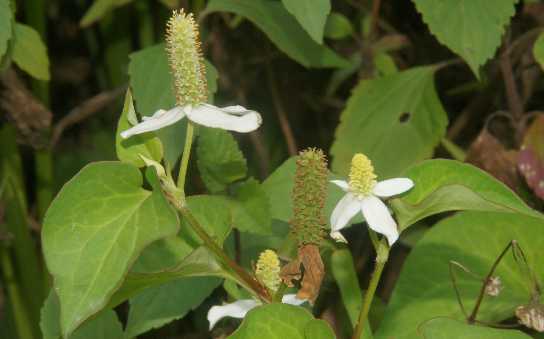
|
| Wild form of chameleon plant growing in Nepal |
The chopped rhizome may also be used, particularly to cut the intensive fermented fish flavour of the local signature food
iromba [ইরোম্বা, ꯏꯔꯣꯝꯕꯥ],
a type of liquid to dry vegetable curry with loads of fermented fish (ngari [ঙারি, ꯉꯥꯔꯤ].
The ground root is an ingredient for fish curries. Leaves can also be dipped in a batter prepared from
chickpea flour to prepare a fresh-
A Chinese dish employing chameleon root is zhe’er gen chao larou [折耳根
In Nepal, where chameleon plant grows widely in the mountains at an elevation up to
